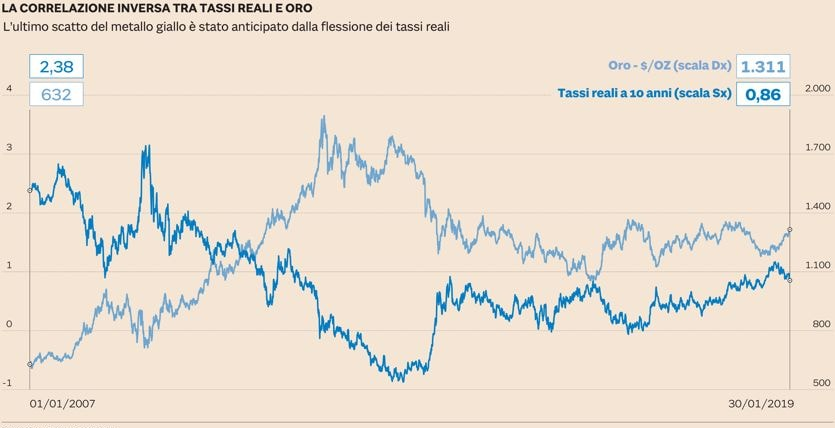The most important variable affecting gold prices is, of course, the US ten-year real rate, which is the nominal rate of the t-bond minus inflation. Indeed, buying gold is both a protection against expectations of a recovery in inflation and an alternative to US bonds when the latter's nominal yields are low.
The graph below provides clear evidence of this relationship, which is particularly accurate over the last 13 years.

In light of this evidence, we reflect on what has happened from December 2019 to date and what might happen in the coming months.
In the first half of 2020, the US ten-year rate continued to fall, from 1.92% to its current level of around 0.6% (with lows below 0.6% marked just this week), in the wake of the most robust quantitative easing ever promoted by the Fed, with almost $4 trillion of liquidity injected into the banking system. At the same time, US inflation declined moderately, from 1.81% to 1.36%, so that the US real rate entered negative territory, represented by the current -0.73%!
This sub-zero fall in the real rate is the main factor explaining the strong appreciation of gold, which rose by 19% from December 2019 to June 2020.
In the light of these considerations, we believe that gold will continue to climb for two main reasons: 1) the FED's expansionary policy shows no sign of stopping, so we should see further downward pressure on the entire US interest rate curve; 2) the anti-Covid fiscal and monetary stimuli will not be long in reviving the engine of the US economy, inevitably producing inflation, and thus helping to keep real rates in negative territory.
Thus, demand for gold will continue to be buoyant, albeit against a backdrop of rising stock market indices and a positive (and anomalous) correlation between commodities and equities.
Study Centre - Hetica Capital
